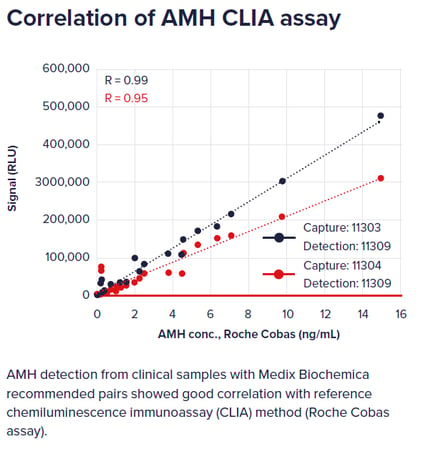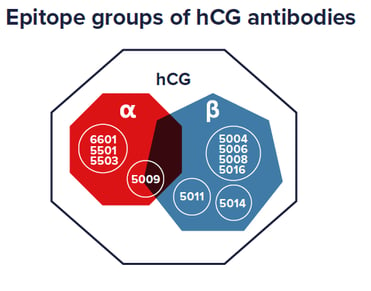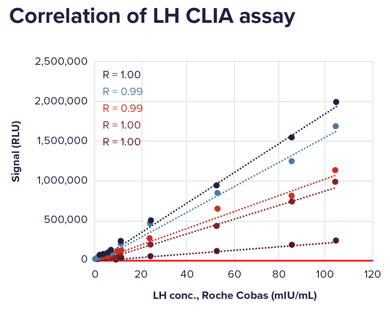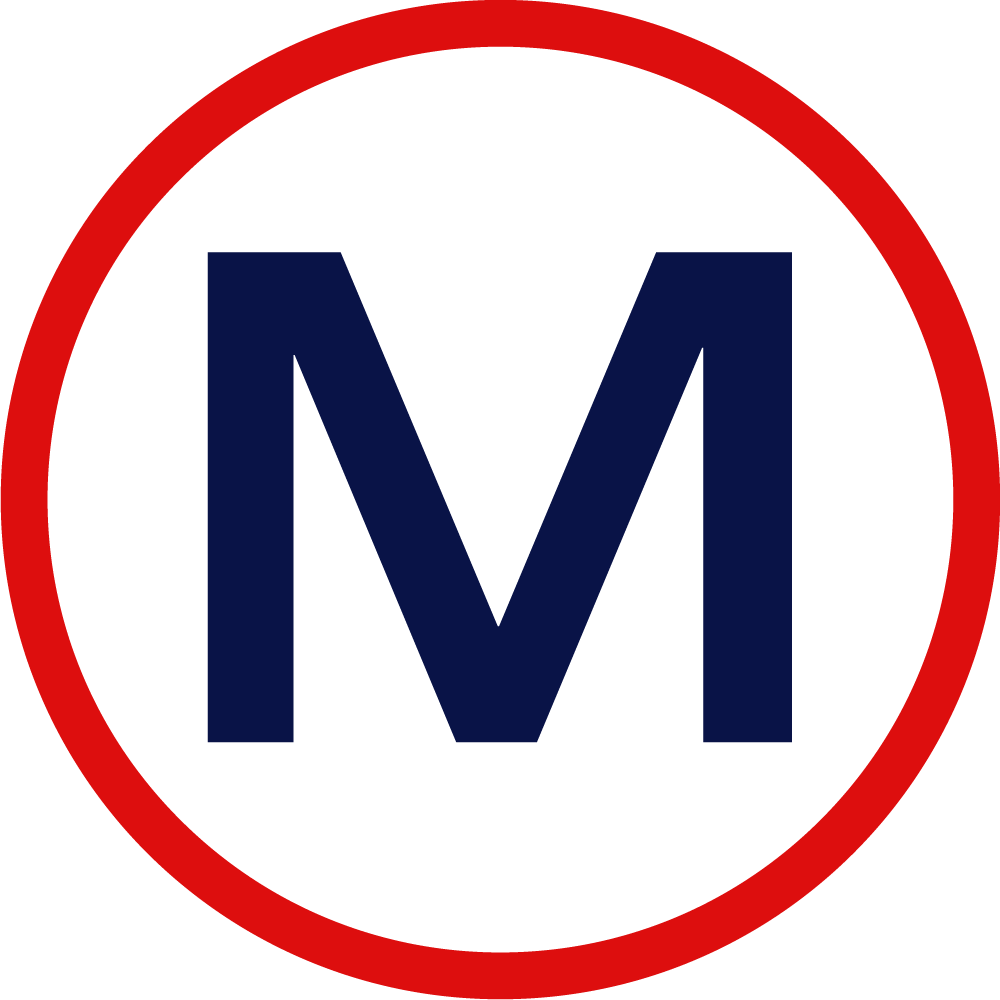Need premium quality antibodies for detecting fertility hormones.
Fertility hormones are widely used for predicting ovulation, detecting pregnancy, and diagnosing reproductive disorders or malignancies related to irregular hormone levels. Some fertility hormone tests can be performed at home or in the clinical setting with point-of-care (PoC) tests such as lateral flow assays – for instance when taking pregnancy tests. It is common, however, that samples are instead sent away to an outside laboratory for analysis. Because hormone levels in bodily fluids are relatively low, accurate detection and quantification of fertility hormones requires highly sensitive immunoassays.
Medix Biochemica is a reliable and sustainable partner for our IVD customers. Between providing validated antibody pair suggestions, matched antigen, and control materials and in-house expertise and experience, we are truly a one-stop-shop for test kit manufacturers. Our emphasis on customer needs and operational excellence ensures consistent product performance, high quality, and accurate results, allowing streamlined assay development, and validation, shortening time to market.
Medix Biochemica Group has developed an extensive selection of premium quality monoclonal antibodies for fertility hormones. We also offer a broad range of antigens and biospecimens which can be used for assay validations and as control materials.
For more information on our fertilities hormone marker, click the link below.
Common fertility hormones
Fertility hormones are a subset of hormones with essential roles in development and reproduction. They perform different functions in males and females, and include the following biomolecules:
Alpha subunit
The alpha subunit is a common component of all glycoprotein hormones (gonadotropins), including follicle stimulating hormone (FSH), human chorionic gonadotropin (hCG), and luteinizing hormone (LH). It functions by forming a heterodimer with a hormone-specific beta subunit to enable receptor binding and activation of downstream effectors. Anti-alpha subunit antibodies are frequently used for detection purposes following hormone capture from sample material with beta subunit specific antibodies.
Anti-Müllerian hormone (AMH)
AMH is produced by the ovaries and testes during sexual differentiation. Because AMH levels in women are known to peak at early adulthood and decrease with age, serum AMH is often used as an indicator for ovarian dysfunction. AMH levels are also measured to assess responsiveness to ovarian stimulation during IVF and to determine the impact of gonadotoxic treatments (e.g., cancer therapies).

Estradiol (E2)
Estradiol is produced primarily in the ovaries, but also by the adrenal gland, and by the placenta during pregnancy. It is one of the most abundant estrogens, along with estrone (E1) and estriol (E3), and serves to promote the development and maintenance of female characteristics. High levels of E2 are linked to menstrual problems, menopausal symptoms, and an increased risk of ovarian tumors or breast cancer, while low levels of E2 can delay puberty and affect bone growth, which may lead to osteoporosis.
Estriol (E3)
Estriol is a major endogenous estrogen, produced in high quantities during pregnancy by the placenta and by the liver of the developing fetus. Its main role is to maintain a healthy uterus prior to labor. Measuring estriol levels in maternal blood or urine is a common approach to assess fetal health, with low second trimester E3 being a recognized marker for Down and trisomy-18 syndromes.
Follicle stimulating hormone (FSH)
FSH is a heterodimer consisting of the alpha subunit and the FSHβ chain. It is secreted from the anterior pituitary gland and regulates mammalian development and reproduction through binding to the FSH receptor on ovarian granulosa cells and testicular Sertoli cells. Serum or urine FSH levels are used to investigate female infertility and menstrual irregularities, as well as to diagnose conditions related to ovarian or testicular dysfunction.
Human chorionic gonadotropin (hCG)
hCG is a heterodimer formed of the alpha subunit and the hCGβ chain. It is produced and secreted mainly by embryonic trophoblasts, and supports a healthy pregnancy by binding to the luteinizing hormone chorionic gonadotropin receptor (LHCGR) on granulosa cells. hCG is primarily used for detecting pregnancy, although it also has utility for applications including pregnancy monitoring and diagnosing trophoblastic tumors.

Luteinizing hormone (LH)
LH is a heterodimer comprising the alpha subunit and the LHβ chain. It is secreted from the anterior pituitary gland and promotes normal reproduction in both sexes through binding to LHCGR. LH levels in blood or urine are used for predicting the timing of ovulation, investigating menstrual irregularities, and diagnosing early or delayed puberty.

Pregnanediol (PDG)
PDG is the primary metabolite of progesterone, and is excreted in the urine. Increased urine levels of PDG are used for confirming ovulation and show close correlation with serum progesterone.
Progesterone
Progesterone is produced in the corpus luteum after ovulation and in the placenta during pregnancy, and is essential for normal menstruation and gestation. Blood levels of progesterone are measured for reasons that include investigating infertility, diagnosing the onset of menopause, and confirming fetal health during high-risk pregnancies.
Prolactin (PRL)
PRL is secreted mainly by the lactotroph cells of the pituitary gland and has a central role in controlling mammary gland growth and development during pregnancy. Blood levels of PRL are often measured in cases of infertility, irregular menstruation, or testicular dysfunction, as well as to diagnose prolactinoma, a noncancerous tumor of the pituitary gland which can cause infertility, pregnancy complications, and visual impairment.

Sex hormone binding globulin (SHBG)
SHBG is synthesized by the liver before being secreted into the circulation, where it serves to regulate sex hormone bioavailability by binding estradiol and testosterone. Blood levels of SHBG are used for assessing testosterone related conditions such as male infertility or female hirsutism, and may also be used to diagnose polycystic ovary syndrome (low SHBG).
Adrenocorticotropic hormone (ACTH)
Although not considered a classic fertility hormone, ACTH is a tropic hormone produced and secreted by the anterior pituitary gland in response to biological stress. While ACTH is not itself classed as a fertility hormone, it regulates multiple fertility hormones via mechanisms that include controlling cortisol release by the adrenal gland. Elevated cortisol levels have been shown to delay ovulation and can limit the success of in vitro fertilization (IVF).
Premium quality reagents for studying fertility hormones
Medix Biochemica Group develops, manufactures, and markets critical raw materials for scientific research and IVD testing. Our extensive product portfolio includes premium quality monoclonal antibodies for detecting and quantifying fertility hormones, as well as a wide variety of antigens and biospecimens with relevance to conditions of health and disease. To discuss how we can support your project, contact us today.
We have hormone positive biospecimens:
| Prolactin(PRL) | Serum | 991-24-PS-PRL |
| hCG | Serum/plasma | 991-24-PS-hCG/991-58-PS-HCG |
| FSH | Serum | 991-24-PS-FSH |
| Estrogen | Serum | 991-24-PS-E |
| Estradiol (E2) | Serum | 991-24-PS-E2 |
| SHBG | Serum | 991-24-PS-SHBG |
To discuss your needs with one of our team, please get in touch today!






